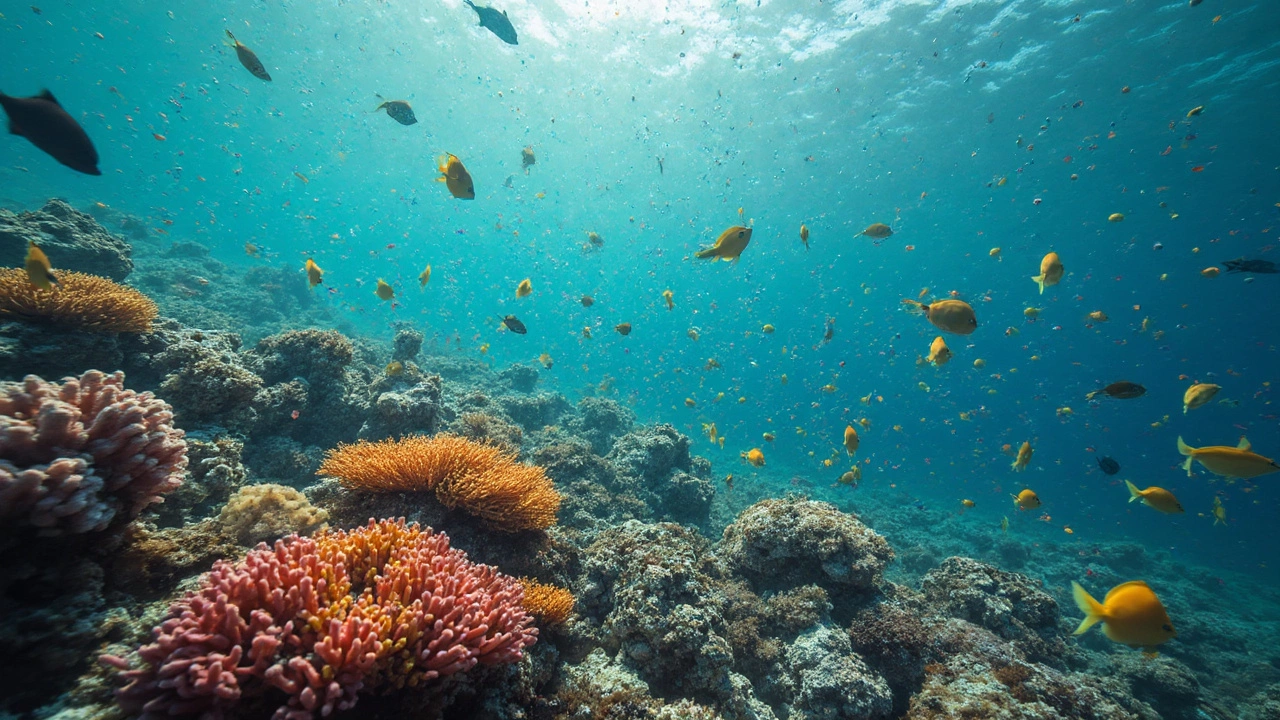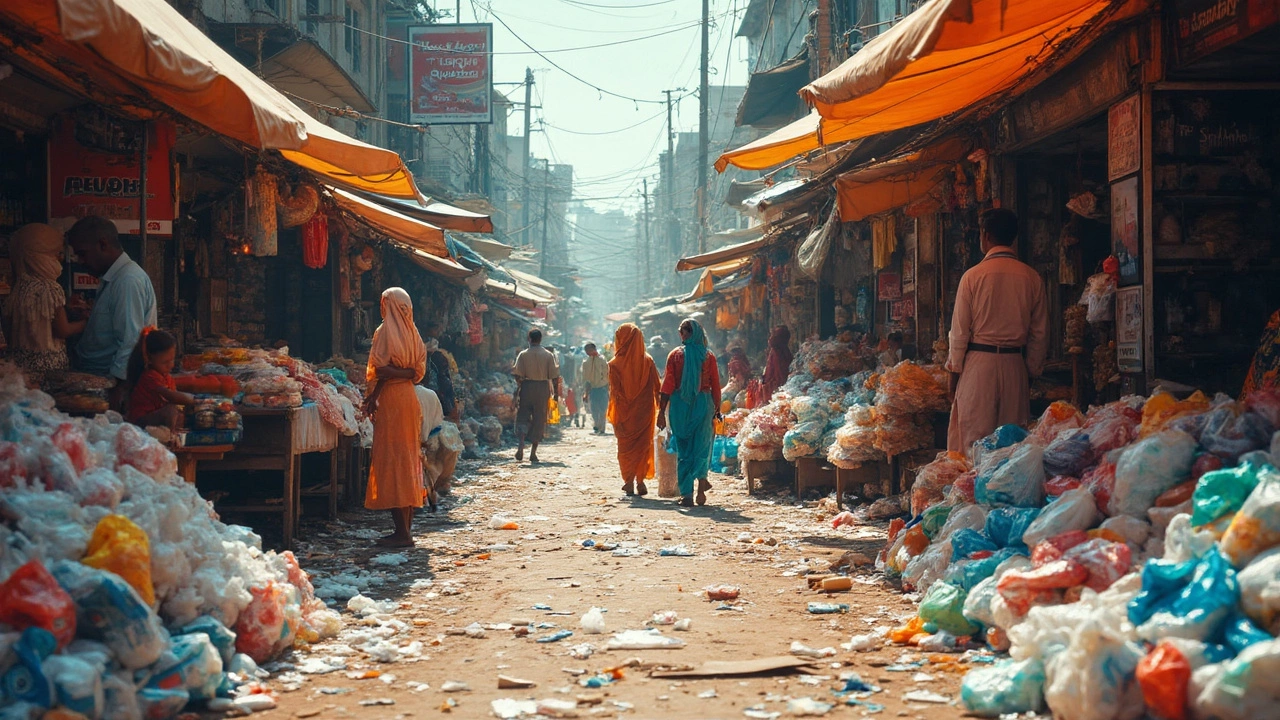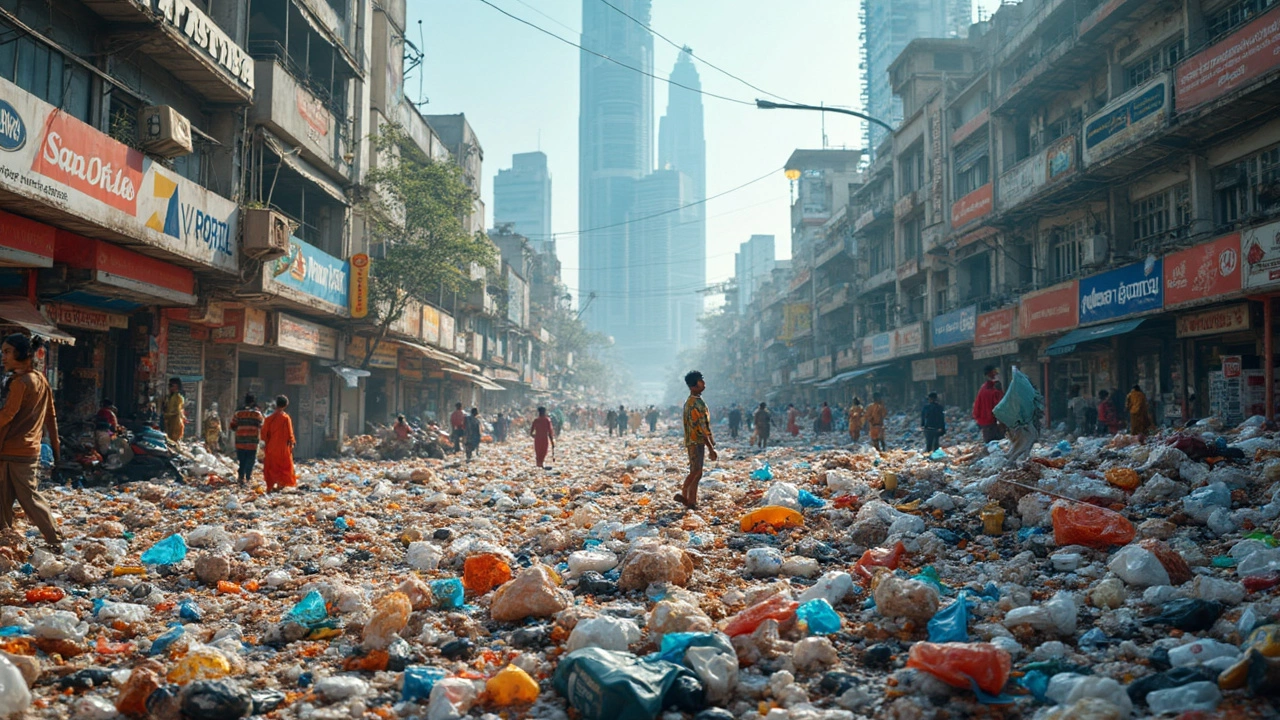- Most Profitable Items to Flip for Quick Cash: What Really Works in 2025 Jul 23, 2025
- India's Second Biggest Chemical Industry Owner: A Look Beyond Reliance May 5, 2025
- India's Super Car: The Story Behind the Fastest Machines on Indian Roads Apr 30, 2025
- Most Popular Small Business in Manufacturing: What's Leading the Pack? Mar 16, 2025
- What is the richest furniture company in the world? Nov 21, 2025
Plastic Pollution – Why It Matters and How to Fight It
Every time you toss a bottle, a bag, or a wrapper, you add to a problem that’s choking rivers, oceans and even the air we breathe. Plastic doesn’t disappear; it breaks down into tiny pieces that stay around for hundreds of years. That’s why the term “plastic pollution” shows up in headlines, boardrooms and school projects. Understanding the real cost helps us move from worry to action.
What’s the real cost of plastic waste?
First off, plastic is cheap to make, but expensive for the planet. A single kilogram of plastic can turn into thousands of micro‑particles that end up in fish, soil and even our drinking water. Studies show that marine life swallows or gets tangled in plastic, leading to billions of dollars in lost fisheries each year. For manufacturers, the hidden cost is the growing pressure from customers and regulators to cut single‑use plastics and switch to reusable or recyclable alternatives.
In India, the situation is even sharper. With a huge population and fast‑growing consumer market, the country generates millions of tons of plastic waste annually. Many of those tons end up in open dumps or the sea, creating health risks for nearby communities. The good news? The same manufacturing expertise that produces plastic can also create sustainable packaging if companies choose the right materials and processes.
Practical steps for manufacturers and everyday people
If you run a factory, start by auditing the plastics you use. Ask yourself: can this item be made from bio‑based polymer, recycled resin, or even paper? Small changes like replacing loose‑fill peanuts with molded pulp protect products and cut waste at the same time. Rise Corp India, for example, has begun offering customers “eco‑friendly” options that use less virgin plastic and more recycled content, proving that greener choices can still meet quality standards.
For the rest of us, the easiest win is to refuse single‑use items. Carry a reusable water bottle, bring your own shopping bag, and choose products with minimal packaging. When you do need plastic, make sure it goes into a proper recycling bin – not the kitchen trash. If your local recycling program accepts only certain types, learn the list and stick to it. Every bottle you recycle instead of dumping saves energy and reduces the demand for new plastic production.
Another powerful move is to support companies that are transparent about their plastic use. Look for labels like “recyclable”, “post‑consumer recycled content” or “zero‑waste packaging”. When businesses see that shoppers care, they invest more in sustainable design. It’s a simple feedback loop: your choice drives industry change.
Finally, stay informed. New regulations are coming worldwide, from bans on thin‑film bags to taxes on plastic packaging. By keeping an eye on policy shifts, both manufacturers and consumers can stay ahead of the curve and avoid costly retrofits later.
Plastic pollution isn’t a problem that disappears on its own, but it’s a problem we can tackle together. Whether you’re overseeing a production line or just buying groceries, the choices you make today shape the planet tomorrow. Start small, think big, and watch the impact add up.
What Plastic Pollutes the Ocean the Most?
- Aarav Sekhar
- Apr 13, 2025
Plastic pollution in the ocean is a huge problem, with certain types of plastic causing more damage than others. Understanding which plastics are most harmful can help us make better choices and push for more responsible manufacturing and waste management practices. From microplastics to large debris, each type of plastic presents unique challenges to marine life and ecosystems. This article explores the major culprits of ocean plastic pollution and suggests practical tips for reducing their impact.
Who Still Dumps Garbage in the Ocean: The Role of Plastic Manufacturers
- Aarav Sekhar
- Apr 3, 2025
Ever wondered who's responsible for still dumping garbage in our oceans? Shockingly, plastic manufacturing companies are major contributors to this problem. Despite global awareness and efforts, certain practices within these companies continue to pollute our waters. Dive into the complex world of plastic production, unravel the industry's dirty secrets, and explore steps towards a cleaner future.
Understanding the Biggest Single-Use Plastic: Surprising Facts and Insights
- Aarav Sekhar
- Mar 17, 2025
The biggest single-use plastic item might surprise you. These everyday items contribute significantly to pollution and environmental issues. This article delves into what exactly is the largest of these offenders, their impact on our planet, and practical tips on how to reduce their usage. Discover the role of plastic manufacturing companies in this dilemma and what is being done to combat it.
Which Company Leads in Plastic Pollution Today?
- Aarav Sekhar
- Feb 16, 2025
The race to uncover the top plastic polluters brings attention to the adverse impact these companies have on the environment. Learn which corporations are the major contributors to plastic waste, how consumer choices play a role, and discover innovative solutions aiming to tackle this growing concern. From multinational giants to grassroots initiatives, the fight against plastic pollution opens up dialogues on sustainability and corporate responsibility.
Who's Really Behind Plastic Pollution?
- Aarav Sekhar
- Feb 5, 2025
Plastic pollution is a growing environmental issue, with plastic manufacturing companies at the center of the debate. This article explores the role these companies play in pollution and whether we can hold them accountable. With insights into the industry's practices, it's time to understand who shoulders the responsibility for our planet's plastic woes.




